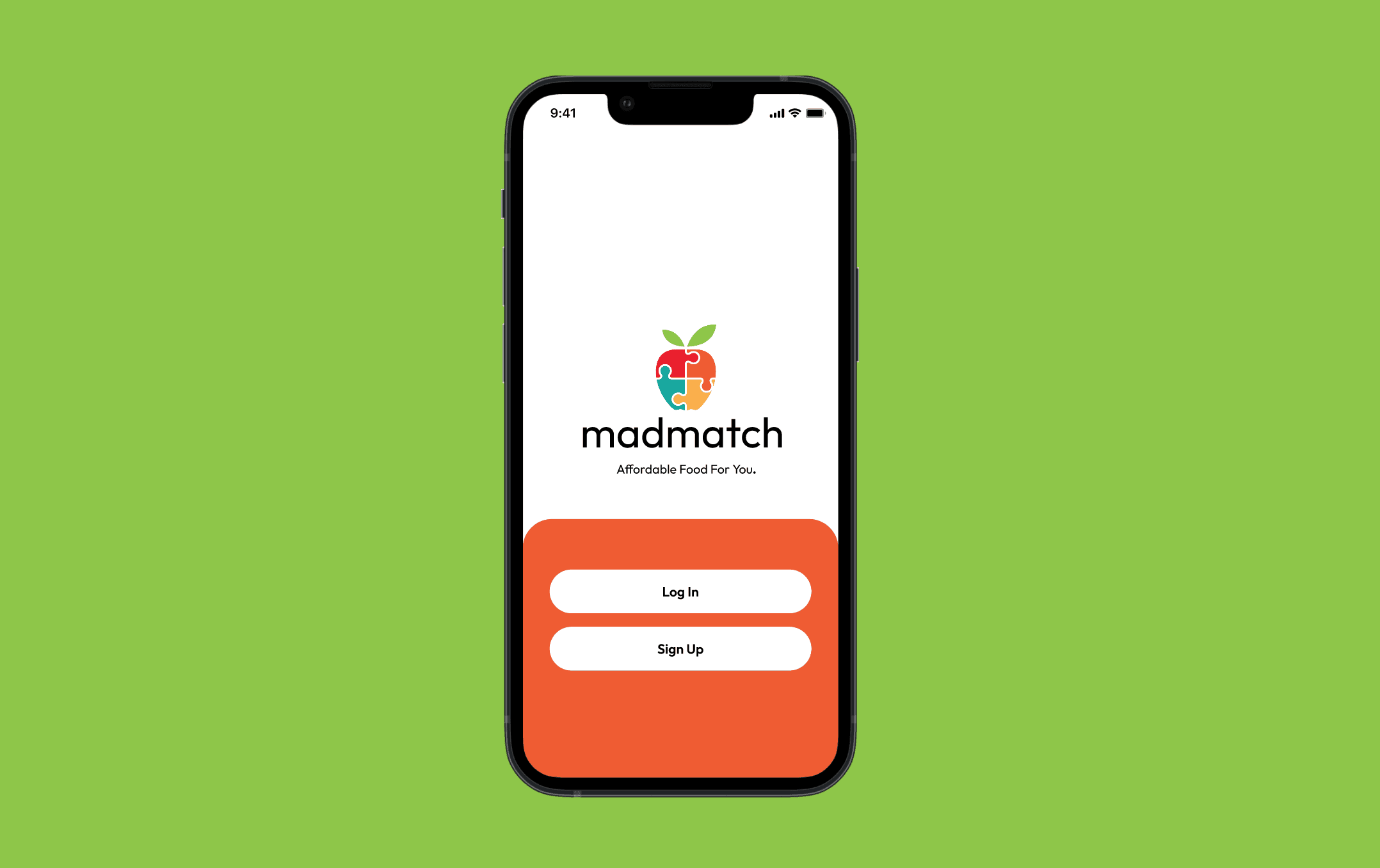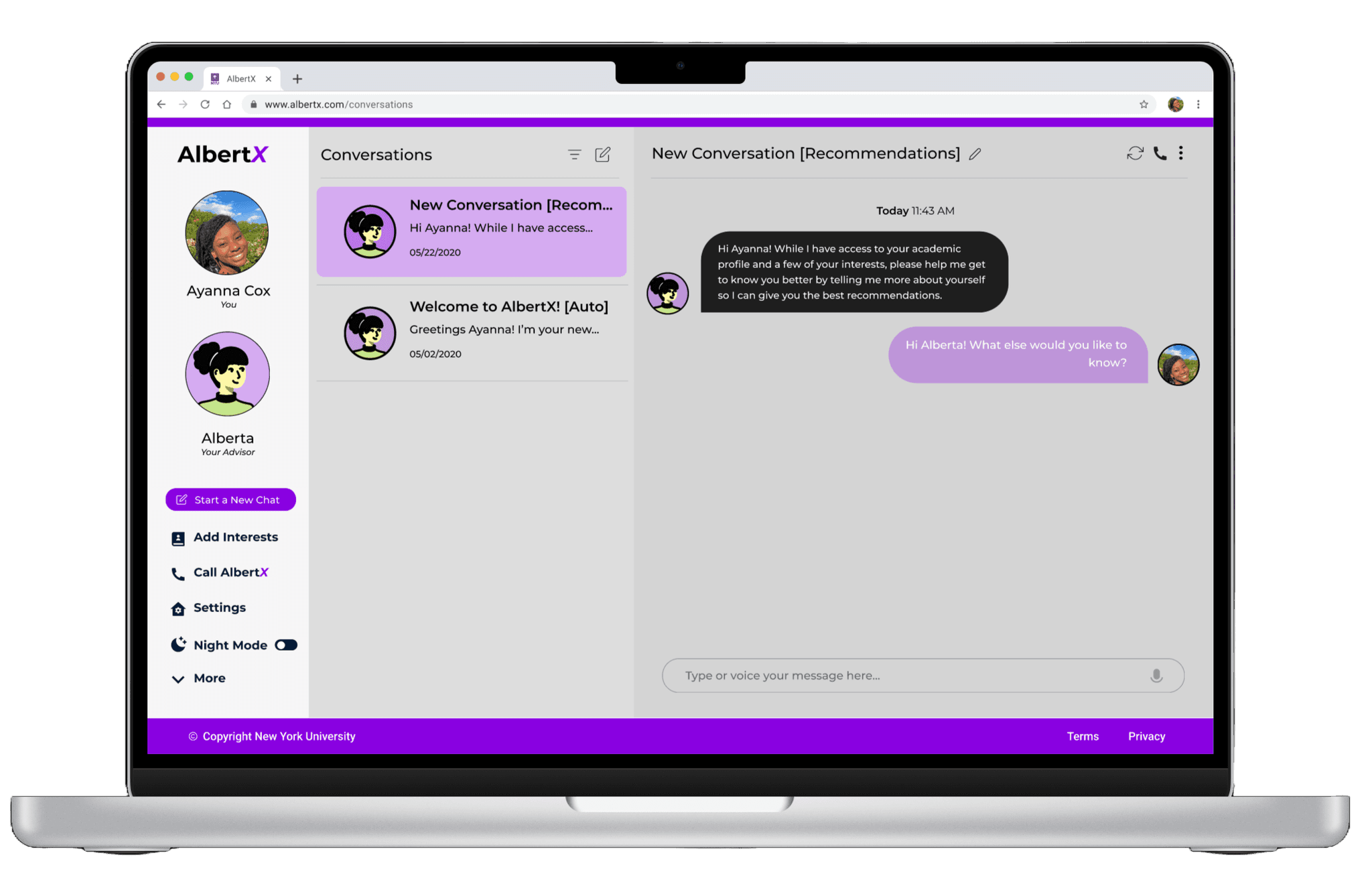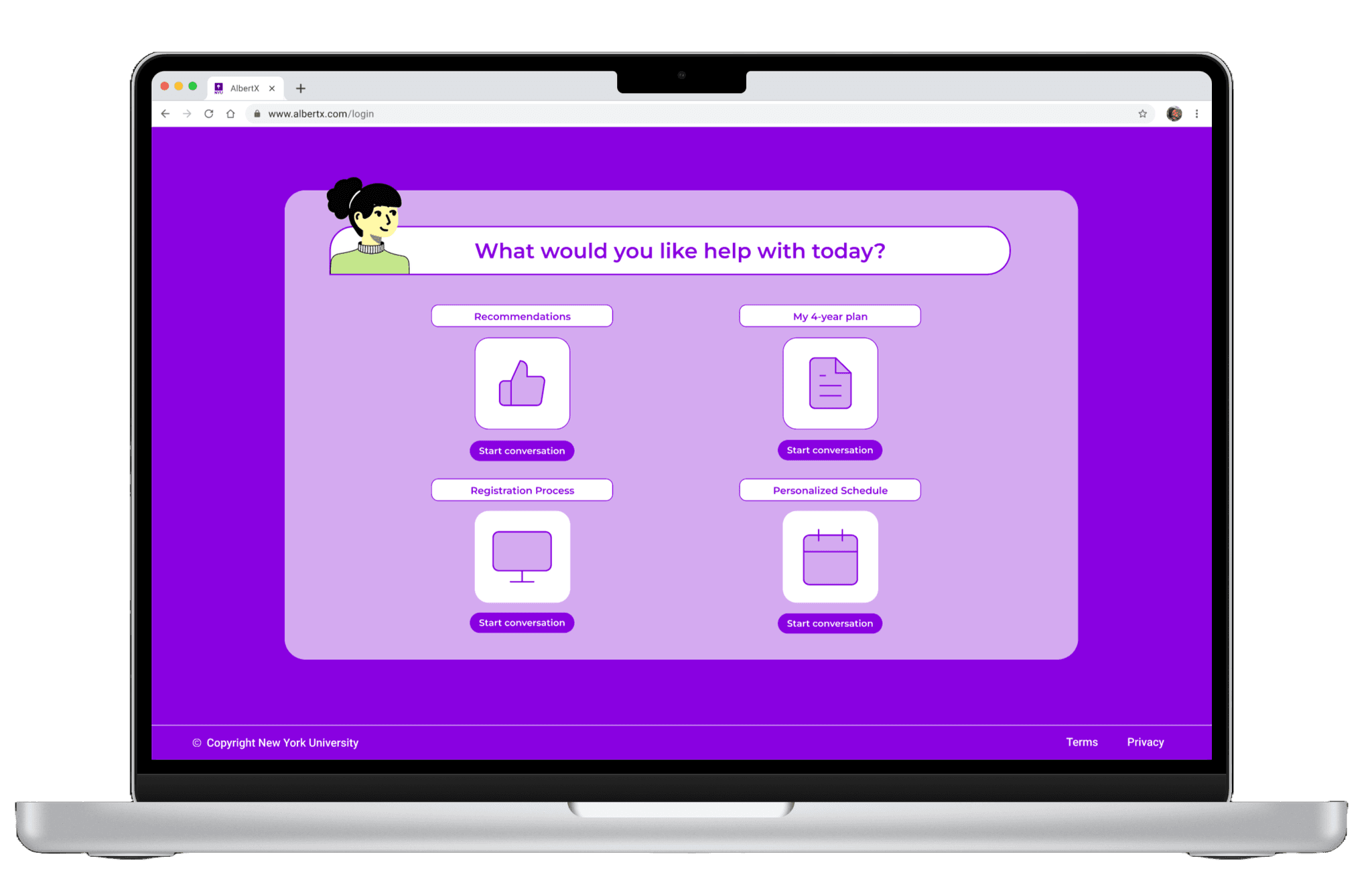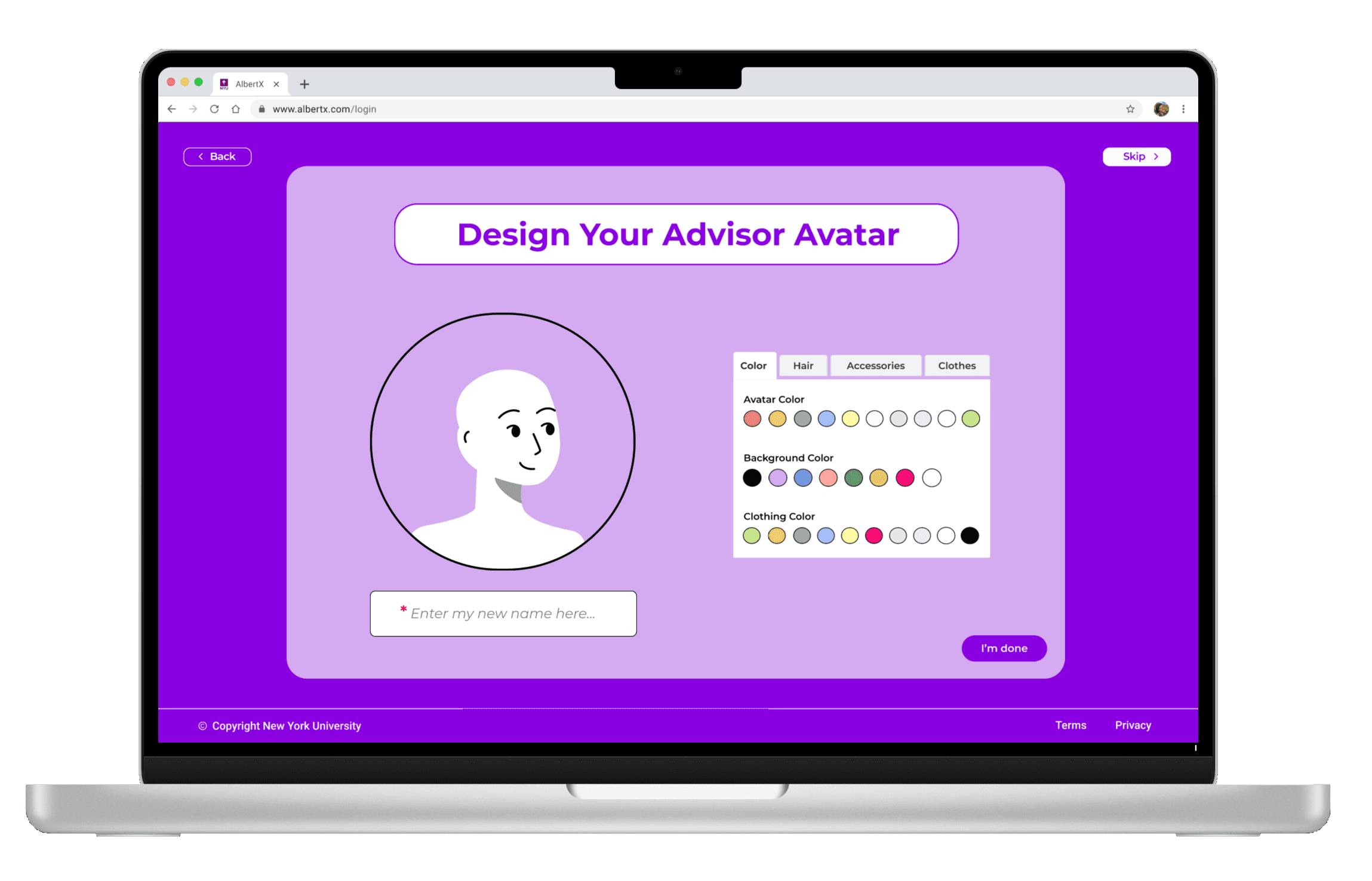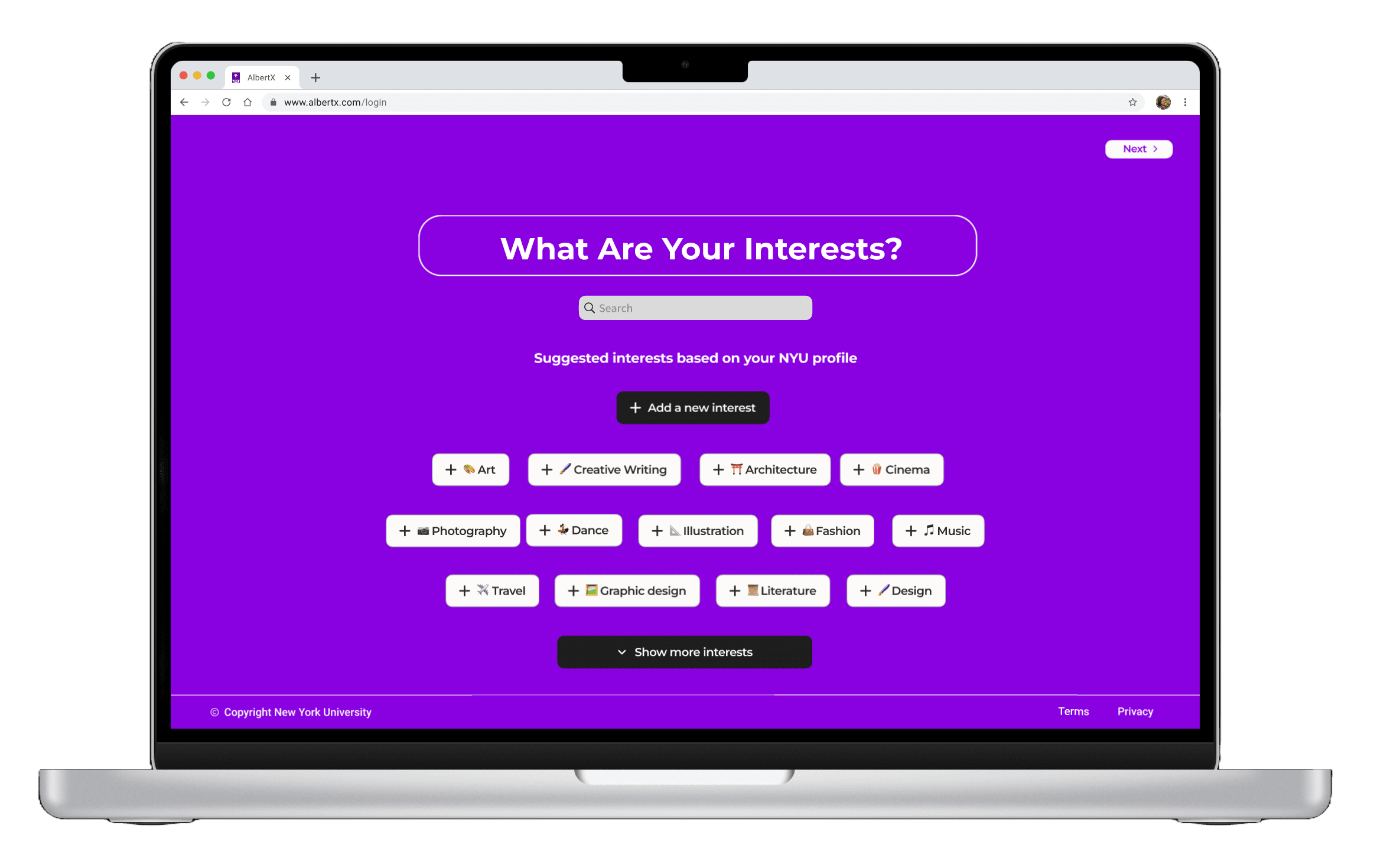The Challenge
My team and I were asked to design a solution to the following question: "How might we reduce food insecurity and/or improve nutrition for individuals or families?" To begin the process, we conducted user research.
Beyond our secondary desk research, my team and I conducted 10+ interviews with individuals who have dealt with food insecurity and food resource organizations such as the College Student Pantry, the NYC Fridge Maps project, LI Cares, and the GN Synagogue Hunger Initiative.
To synthesize all of our interview notes, we created an affinity map where we grouped similarly themed ideas.
The Problem
There is a lack of understanding of students' personal journeys.
Why?
Academic advising meetings tend to be limited in time.
Why?
Advisors do not have the availability to solely focus on one student.
Why?
The demand of advisors is higher than the supply.
Why?
NYU's size too large to allocate personal advisors to each student.
Process
Our team started the work by by following establishing a solid understanding of the SaaS and working on gathering insights from users.
Define the target audience: The first step is to identify the target audience and their needs, pain points, and preferences. This information will inform the design of the landing page and ensure that it resonates with the target audience.
Create a wireframe: A wireframe is a rough sketch of the landing page layout and content. This step involves creating a wireframe that incorporates the key elements of the landing page, including the headline, subheadline, call-to-action, images or videos, and user-friendly forms.
Design the landing page: Once the wireframe is approved, the landing page design can be finalized. This step involves incorporating branding elements, such as colors, fonts, and imagery, as well as optimizing the layout and design for mobile responsiveness and user experience.
Write persuasive copy: Persuasive copy is critical to the success of a landing page. This step involves crafting compelling copy that communicates the value proposition of the SaaS product, addresses the target audience's pain points, and encourages them to take action.
Interviews
People of different socioeconomic backgrounds suffer from food insecurity because of unpredictable sources of income and school debt/loans, since many folks tend to live from paycheck to paycheck.
People of different citizenship statuses may not be eligible for certain aid programs, like some international students.
People prefer anonymity when it comes to utilizing certain resources. Some people feel uncomfortable getting help when it is a face-to-face interaction.
People experience food insecurity from lack of planning due to prioritizing other time-consuming elements of their lives such as work, children, etc.
How did/do you plan your coursework?
When do you typically use NYU Albert?
Is there anything that you'd change about the current NYU Albert?
How did/do you plan your coursework?
“First-gen kids who have no idea what they're doing need more guidance [to ensure] graduation on time. I took an extra elective that I didn’t need to.”
Adamary
Student
“It’s hard for an advisor to be intentionally aware of every student and be able to resolve each issue.”
Abigail
Academic Advisor
"To be eligible for class registration, I meet with my advisor for 10 minutes where we recite what classes I am taking based on a basic 4-year path for my major. It’s very surface-level.”
Kora
Student
“Since my English class didn’t work out on registration day, I had to just do a backup, but on the first day I didn’t know how waitlists worked.”
Andrew
Student
Key Insights
Solution
The solution for the SaaS landing page project involved designing an optimized landing page that effectively engaged potential customers and communicated the value proposition of the SaaS product.
User-centered design: The landing page was designed with the target audience in mind, incorporating elements that aligned with their needs, preferences, and pain points.
Clear value proposition: The value proposition of the SaaS product was clearly communicated on the landing page, highlighting the key benefits and how it solves the target audience's problems.
Stand-Out Features
Improvements After Testing
Basic Design System
Highlighted Screens
Next Steps
The results of the SaaS landing page project were highly successful in engaging more customers to convert and boosting sales and subscriptions. After implementing the newly designed landing page, we've seen:
Increased customer engagement: The new landing page design successfully engaged more potential customers, resulting in a significant increase in the number of page views and user engagement.
Higher conversion rates: The optimized landing page effectively communicated the value proposition of the SaaS product, resulting in a significant increase in the number of conversions and subscriptions.
Improved customer retention: The enhanced user experience of the landing page resulted in improved customer satisfaction, leading to increased customer retention rates.
Increased revenue: The higher conversion rates and improved customer retention resulted in a significant increase in revenue for the SaaS product.
